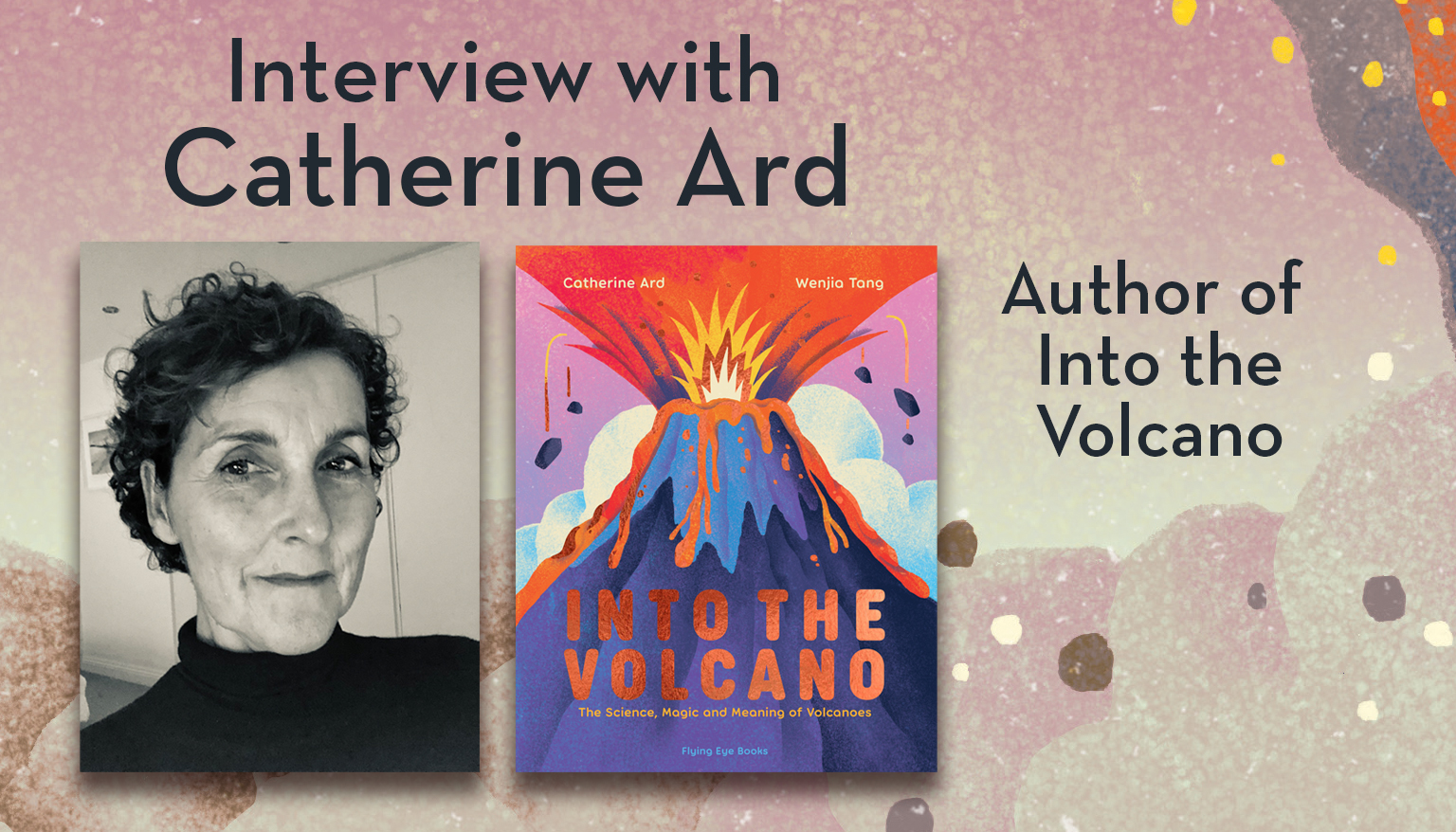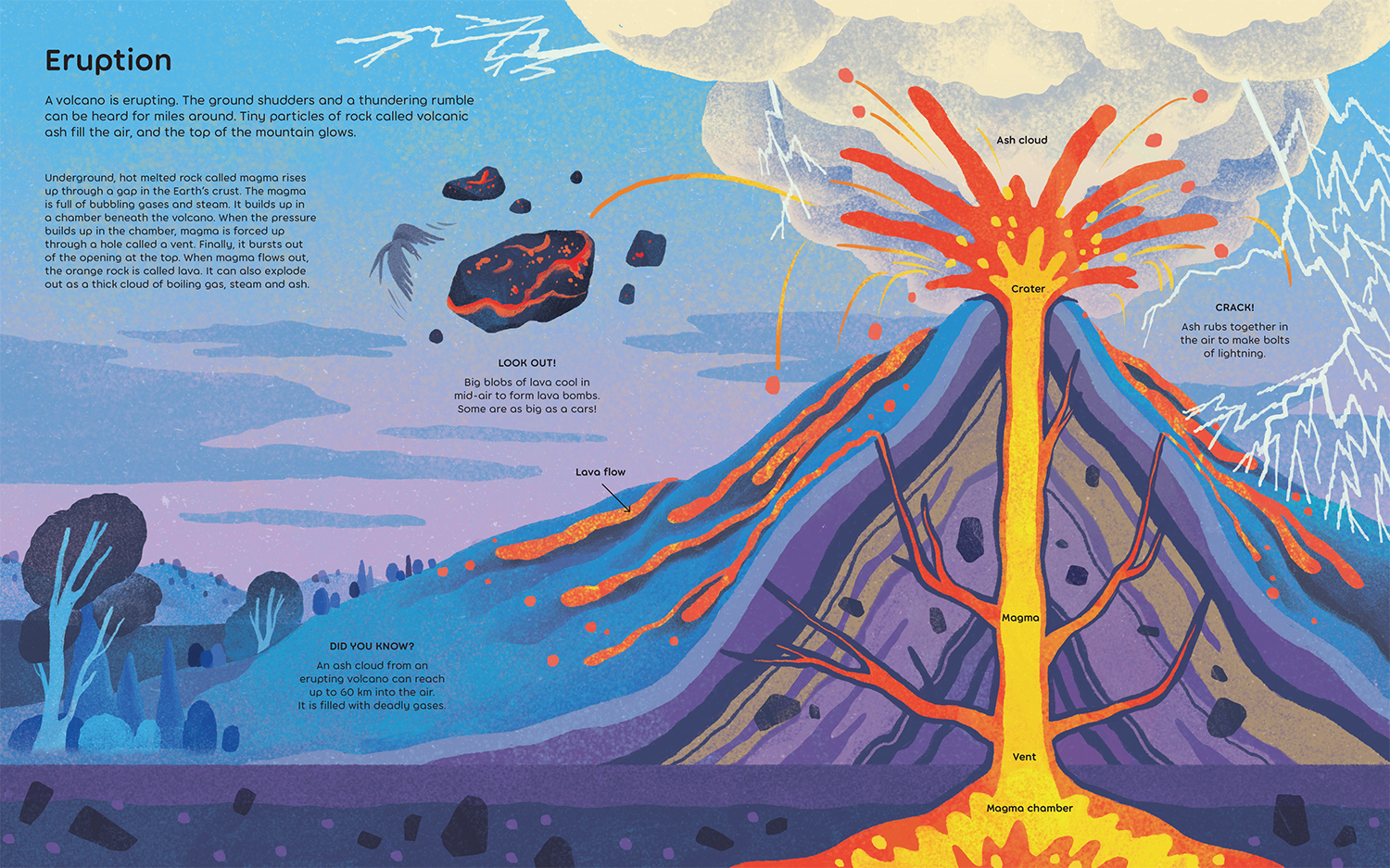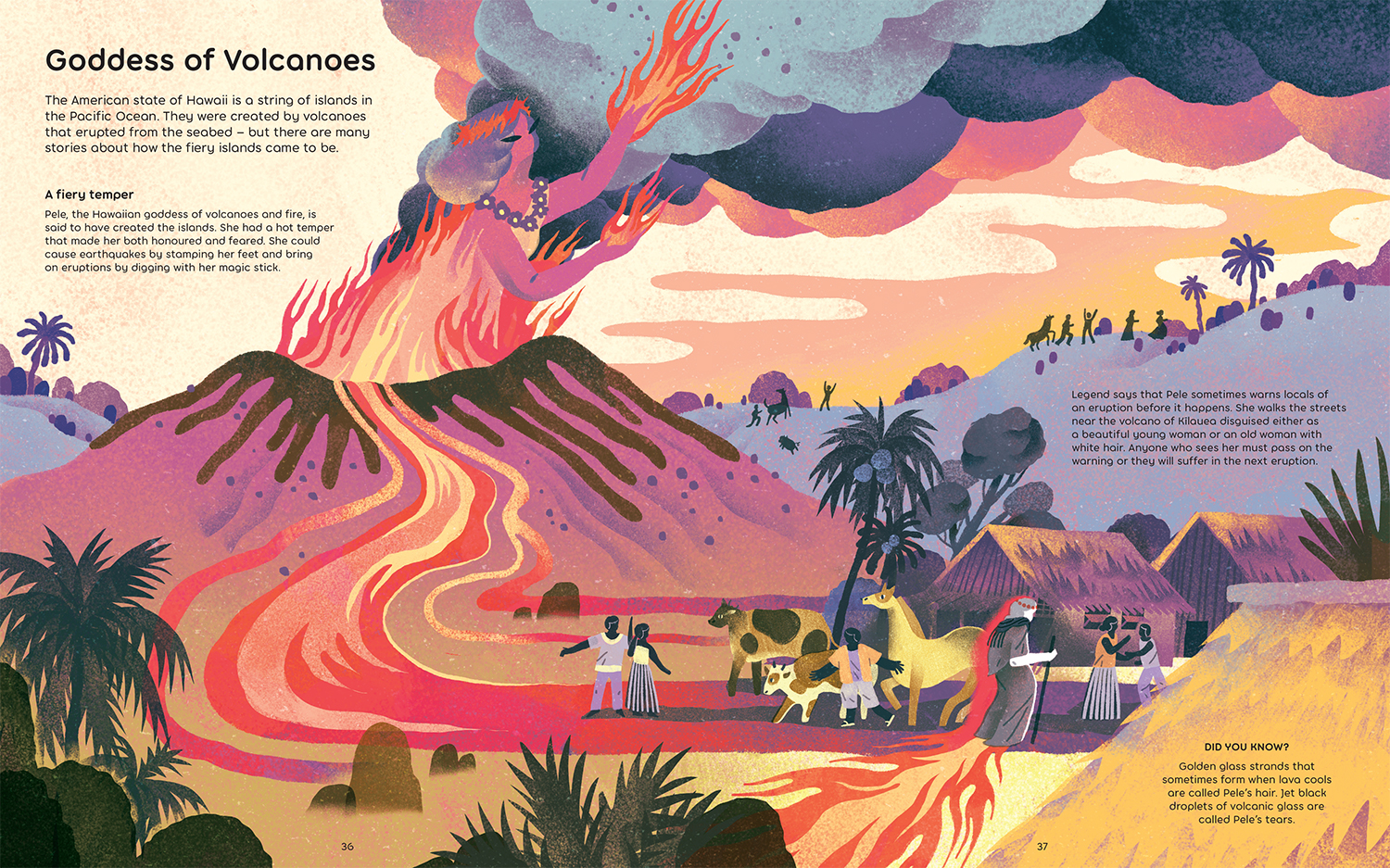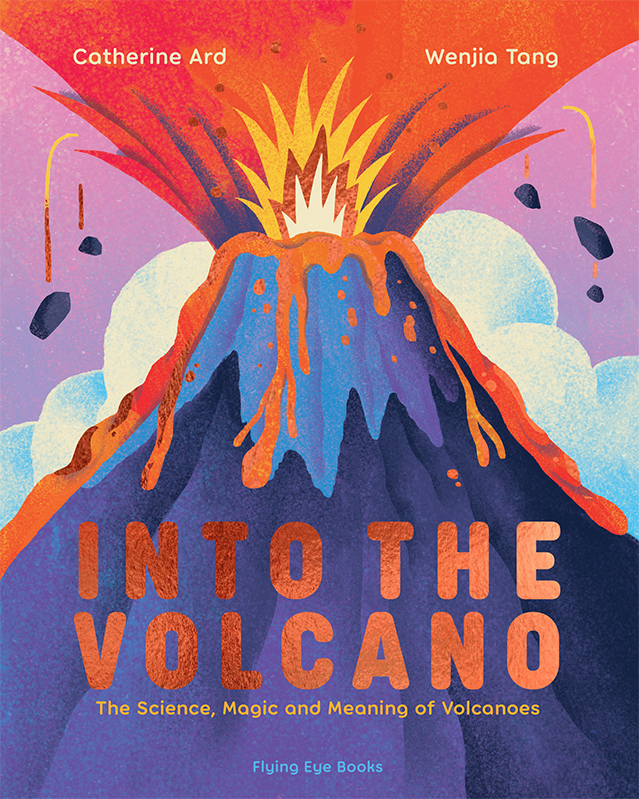
We asked author Catherine Ard to tell us about her new non-fiction Title, Into the Volcano: The Science, Magic and Meaning of Volcanoes. Read on to discover how Catherine’s fascination with volcanoes came to be, and what she loves about her collaboration with illustrator Wenjia Tang.
My research into volcanoes began before I knew I would be writing this book. I watched the incredible documentary Fire of Love. It follows the work of the volcanologist husband and wife team Katia and Maurice Krafft, who travelled the world monitoring and observing volcanoes and eruptions. Their ground-breaking research increased the understanding of volcanic behaviour and saved many lives. Tragically, their own lives ended when they were engulfed by an eruption at Mount Uzen in Japan.
The documentary is a thrilling and awe-inspiring introduction to volcanoes. It made me reflect on how different my first experience with this explosive subject had been over 40 years earlier.

I distinctly recall sitting in a classroom and being passed a photocopied sheet with an outline of a volcano on it with lines pointing to its various parts. It was memorable precisely because it was so unmemorable. I had been looking forward to this exciting topic, but it had been reduced to a colourless labelling exercise. I know from my own daughters’ experience that teaching methods have moved on considerably, but even so, when I was given the opportunity to write this book, I was eager to right my childhood wrong. It was my chance to bring the power, mystery and history of volcanoes to life and really capture children’s interest and imagination. With the help of Wenjia’s incredible artwork, I wanted to create the book I would have loved to read all those years ago.
Volcanoes are incredible. Powerful and destructive, yet also creative and transformative – carving new landscapes and forming new land. Many people are willing to live with their brooding threat because of the fertile earth they provide. They evoke fear but also respect. Human lives and culture are inextricably fused with the births and deaths of volcanoes.
This series of books from Flying Eye is unique in that it looks at people’s relationship with the natural world as well as the science behind them. There are many different types of volcanoes and various kinds of eruptions, but beyond the science, they seem to have personalities – quiet and brooding, simmering then explosive and angry. It’s no wonder that the Myths and Legends chapter uncovers so many wonderful ancient stories of volcanoes depicted as monsters and animals, gods and goddesses.

Equally, in the arts, there was a wealth of options to explore, from folk art to world-famous paintings. I also discovered less obvious connections where volcanoes have influenced creativity, such as the slow-growing trees used to make Stradivarius violins, and the dark ash cloud over Europe that inspired Mary Shelley’s Frankenstein.
In writing this book I have learned so much about volcanoes. I’ve also discovered that human history and culture are as much a part of the story as the volcanoes themselves, and it has been a pleasure and a privilege to be able to show that connection it in this book.

Into the Volcano: The Science, Magic and Meaning of Volcanoes
Catherine Ard, Wenjia Tang
A beautifully illustrated non-fiction book about volcanoes, covering the science, their various forms in nature, and the myths, stories and symbolism that they have inspired.
Explore the awe-inspiring world of volcanoes, delving into their captivating formation, fiery eruptions, and the remarkable impact they have on our planet. From shaping landscapes and influencing climates to their role in shaping human history, this beautifully illustrated guide unveils the astonishing wonders of these geological marvels.
Get the book HERE
